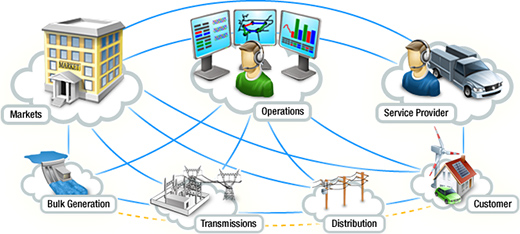
The smart grid is an engineering aspect of power engineering that affects everyone worldwide. The IEEE is actively engaged in the Smart Grid Form (http://smartgrid.ieee.org/). The smart grid is an electrical network utilizing digital technology to deliver electricity from suppliers to consumers using two-way digital communications to control everything electrical at consumers’ homes or industrial locations. The grid saves energy, reduces costs and increase reliability and transparency if risks inherent in processing massive amount information simultaneously are avoided. This is where compliance engineering must focus in the future as a way of addressing energy independence and minimizing global warming. The Internet has made it practical to apply sensing, measurement and control with two-way communications related to electricity production, transmission and distribution all at a high technology level. The item of concern for engineers both today and in the future is to ensure reliable operation that is free from harmful interference or disruption.
There are five major areas of challenge to ensure a reliable Smart Grid system is not disrupted by a transient or terrorist/abnormal event.
- Integrated communication networks: Elements of the grid communicating with each other.
- Sensing and measurements: Data communication received in the control center.
- Terrorism: Intentional or unintentional disruption; terrestrial (lightning), extra-terrestrial (solar flares), physical damage (natural disasters), or cyberspace (hacking into the infrastructure).
- Using advanced components: New technology for advanced capabilities.
- Integrating Broadband over Powerline (BPL): Ensuring Wideband Local Area Networks signals present on power lines do not cause EMI to commercial communication services.
With the Smart Grid our focus as compliance engineers, both safety and EMC, must be on determining what to work on first; emission or immunity threats, compliance with regulatory standards or electromagnetic compatibility, testing components or finished assemblies, incorporating functional safety, or implementing power saving features.

Leave a Reply